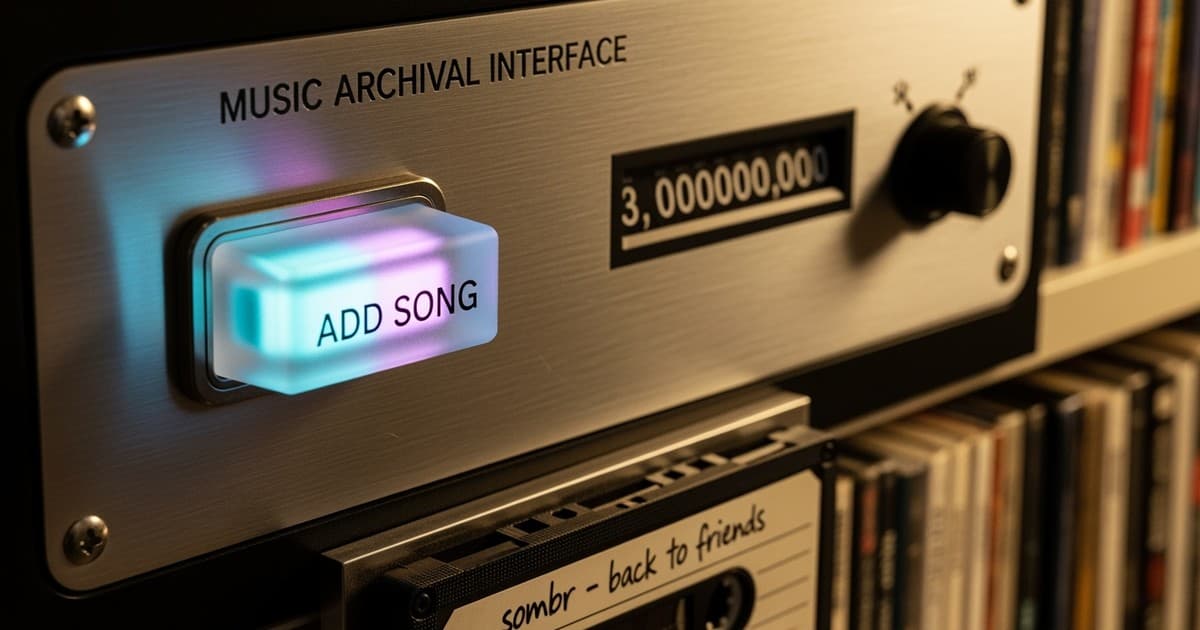YouTube revendique 8 milliards USD de paiements à la musique au cours de l'année écoulée

Par Trevor Loucks
Fondateur et Développeur Principal, Dynamoi
YouTube a déclaré avoir versé à l'industrie musicale plus de 8 milliards USD au cours des 12 mois s'étalant de juillet 2024 à juin 2025, grâce à son « double moteur » de publicité et d'abonnements. Lyor Cohen, responsable mondial de la musique chez YouTube, a présenté cela comme une preuve que la plateforme peut mieux monétiser que ses concurrents audio-only.
Pourquoi c'est important
Pour les labels et les éditeurs, le montant des chèques de YouTube rivalise désormais avec ou dépasse certaines lignes DSP—surtout si l'on inclut le Content ID sur les revenus UGC plus le partage des revenus Shorts. Cela renforce le pouvoir de négociation pour les sorties de catalogue et de première ligne, et valide les stratégies de croissance axées sur la vidéo.
Pour les équipes d'artistes, YouTube devient un canal de performance plus clair : si le RPM (revenu par mille vues) se maintient, le déplacement du budget vers les campagnes de vues à forte intention et la programmation de playlists peut augmenter à la fois la monétisation et la découverte. Le mix « pubs + abonnements » se prémunit contre les chocs d'algorithmes ou de CPM sur une seule surface.
En chiffres
- 8 milliards USD versés à l'industrie musicale en 12 mois.
- Double moteur : publicité + abonnements YouTube Music/Premium ; les deux « tournent à plein régime ».
- Comparables : La presse spécialisée situe la période entre juillet 2024 et juin/juillet 2025 ; le cadrage varie selon les sources, mais l'ampleur est cohérente.
- Contexte : YouTube avait précédemment indiqué son objectif de devenir le principal partenaire de revenus de l'industrie « d'ici quelques années » ; cela maintient cette trajectoire.
Seuils de référence à utiliser cette semaine
- Vérification du RPM : Pour les clips musicaux sur les chaînes établies, modélisez un RPM de 2 à 5 USD provenant des publicités, avec un potentiel supplémentaire sur le temps de visionnage Premium. Validez par rapport à vos propres analyses Studio avant de passer à l'échelle.
- Entonnoir Shorts → longue durée : Attendez-vous à un RPM plus faible sur Shorts mais à une découverte accrue. Optimisez les CTA pour diriger les spectateurs vers le contenu longue durée (temps de visionnage plus élevé, meilleur RPM) et vers les sauvegardes YouTube Music.
- Mix territorial : Les CPM et la pénétration Premium varient selon les pays, ce qui fausse les résultats. Rééquilibrez le ciblage vers les zones géographiques où la part Premium augmente afin de lisser la volatilité du marché publicitaire.
Entre les lignes
-
L'UGC est la clé. Le Content ID et les téléchargements des créateurs constituent une seconde source de revenus que les DSP audio-only ne peuvent égaler à grande échelle. Cela est important pour le catalogue et les accroches mémorables—les clips continuent de générer des revenus même lorsque les chansons sortent des listes éditoriales.
-
Les calculs marketing changent. Si vous pouvez estimer la valeur de vue organique (AdSense + allocation Premium) et la lier à la promotion payante qui stimule la rétention et la mise en playlist, vous pouvez justifier un CAC plus élevé pour la croissance sur YouTube que pour le streaming audio pur. La presse technologique a mis l'accent sur le paiement total ; pour les opérateurs, l'essentiel est de savoir comment ce paiement parvient à vos droits et canaux spécifiques.
-
Le risque lié à la plateforme persiste. Les turbulences de l'organisation musicale de TikTok et les problèmes de licence en cours montrent pourquoi il est important de se diversifier vers une plateforme avec une plomberie de revenus plus claire. Même si les formats courts convergent, la stabilité des politiques affecte la prévisibilité.
Ce que cela signifie pour la planification du T4
- Réaffectation budgétaire : Testez une réaffectation de budget de 15 à 30 % des réseaux sociaux généralistes vers des campagnes YouTube optimisées pour le temps de visionnage et la complétion de playlist. Associez-les à des montages adaptés aux mid-rolls pour maximiser l'éligibilité aux publicités.
- Hygiène des droits : Auditez la propriété Content ID et les politiques de livraison maintenant ; les réclamations incorrectes font fuir les revenus dans les écosystèmes à forte densité d'UGC.
- Mix de formats : Publiez des montages verticaux et horizontaux ; dirigez les spectateurs de Shorts vers le contenu longue durée canonique pour augmenter les revenus pondérés par le RPM par cycle de sortie.
En conclusion
L'année à 8 milliards USD de YouTube signale que la musique vidéo-first n'est pas seulement une couche de découverte—c'est un canal de revenus de premier plan avec des unités économiques défendables lorsque vous gérez les droits, l'entonnoir et les zones géographiques avec intention. Les équipes qui traitent YouTube comme un volant d'inertie monétisable—et non comme un simple poste de promotion—captureront une part croissante du gâteau en 2026.
À propos de l'éditeur

Trevor Loucks est le fondateur et développeur principal de Dynamoi, où il se concentre sur la convergence de la stratégie commerciale musicale et de la technologie publicitaire. Il s'attache à appliquer les dernières techniques de technologie publicitaire aux campagnes des artistes et des maisons de disques afin qu'elles augmentent la croissance des redevances musicales en aval.




